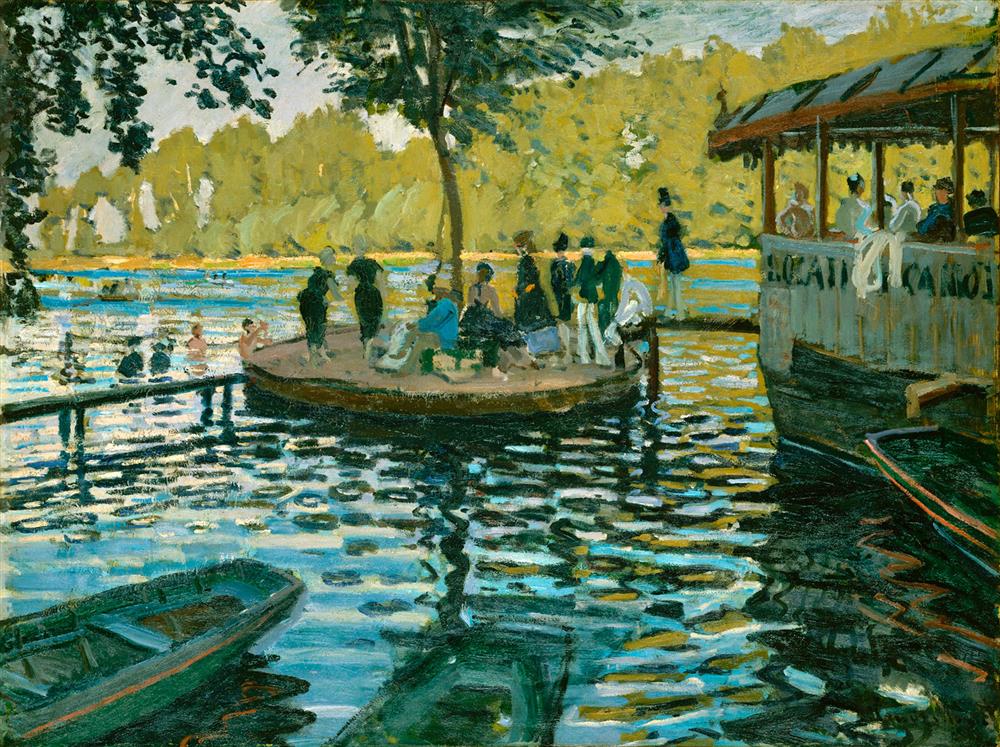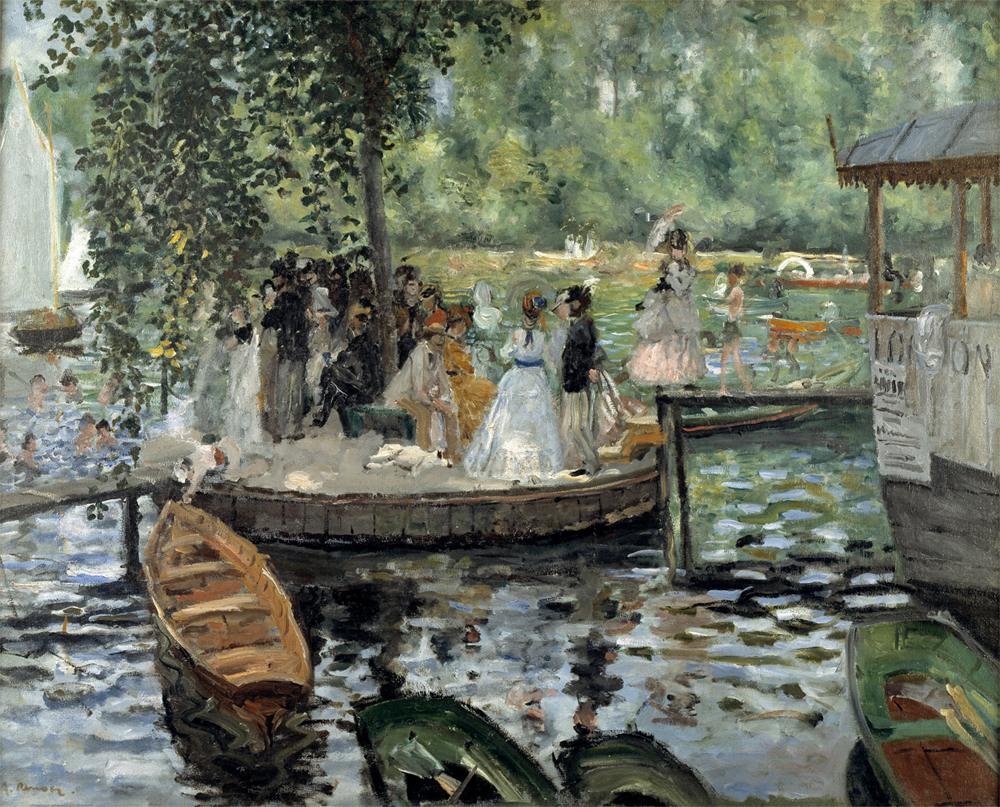La Grenouillère - Renoir with Monet

Claude Monet, La Grenouillère, The Metropolitan Museum of Art, New York, USA.
In the summer of 1869, Monet and his family moved to Saint-Michel near the Bougival on the western shore of Seine. Renoir often visited Monet and worked together in scenic locations. The nearby La Grenouillère (Frog Lake) was a favorite meeting place for those who came from Paris. For the Parisians, this was a promenade, especially for swimming and eating. Even Emperor III Napoleon and his wife Eugénie visited here in 1869. Monet and Renoir transferred such a page to the canvas in Bougival.
The two painters worked on the same subject on their coffee tables placed side by side. They both chose people who had fun on a small islet called Flower Pot with a single tree on it. For two artists, the pioneers of impressionism, this place was perfect. Both tried to reflect the structure and features of the place in all its details. Although these paintings resemble each other, they also revealed the basic distinctions between the two painters.

Pierre-Auguste Renoir, La Grenouillère, Nationalmuseum, Stockholm, Sweden.
-Since they stood side by side, the perspective of both painters was almost the same. Renoir was probably a little to the right of Monet and a little closer to the water.
- He built the structure of the Monet painting with horizontal brush strokes. Renoir had achieved color transitions with small brush strokes.
- Monet's brush strokes were more prominent. There was a blur in Renoir's brush strokes.
- Monet chose a few cool and soft colors. Renoir used red in his palette. Renior featured sensitive tones in his painting.
- Monet was not interested in fashion, creating his figures only with brush touches. Renoir, on the other hand, caught the qualities and details of fashion while making the clothes of the figures standing under the sunlight.
- Monet distributed the shadows evenly across the entire image and placed the white light to emphasize the edges, thereby creating a clear, dynamic feeling that melted the focus in the middle and radiated over the entire field of view. In turn, Renoir made the center of his painting the focal point of his arrangement, creating a warm, intimately closed environment.
- Monet had made significant progress in capturing momentary emotions through the effects of light, a lifetime theme. A quick application of colors with strong contrasts, free and wide brush strokes conveyed the overall impression of the landscape. However, Renoir was more concerned with the human body and objects.
These two paintings, which show the moment of rest in contemporary society, were made with a brand new painting technique. The two works had been an important collaboration in which painters put their personal style.
Bibliography;
Heinrich, C., (2006). Monet, Birinci Basım, Taschen/Remzi Kitabevi, İstanbul.
Zeidler, B., (2005). Monet, Literatür Yayıncılık, İstanbul.
Newall, D., (2014). Empresyonistler Ayrıntıda Sanat, İkinci Basım, Türkiye İş Bankası Kültür Yayınları, İstanbul.
Spence, D., (2012). Büyük Ressamlar Monet, Üçüncü Basım, Koleksiyon Yayıncılık, İstanbul.
Spence, D., (2011). Büyük Ressamlar Renoir, Birinci Basım, Koleksiyon Yayıncılık, İstanbul.
Çev:Emek, K., E., (2001). Artbook Renoir Hayatı ve Güzelliği Yücelten Empresyonist,, Dost Kitabevi, Ankara.












